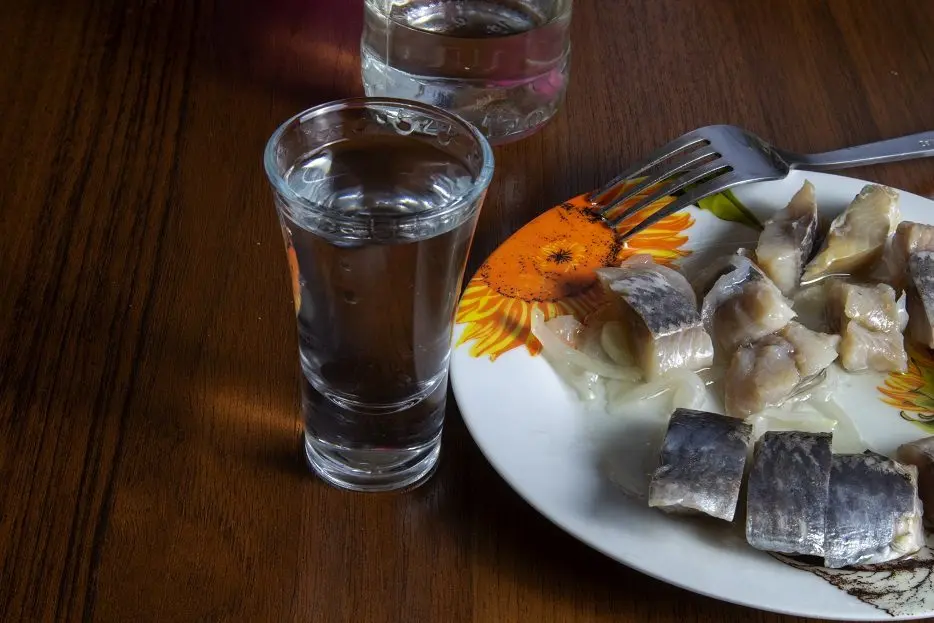Sour moonshine is a problem that novice distillers often face, who make mash using the peasant method – without a water seal. If you take action in time, you can try to save the drink using improvised means. Separately, we will consider the causes and measures to prevent souring of the mash.
During fermentation, the yeast produces organic acids, so do not panic ahead of time – there should be a slight sourness in the mash (the intensity depends on the raw materials). The main thing is to prevent acetic souring, which is easy to recognize by the characteristic features indicated below. In turn, the finished moonshine should not be sour, this indicates a violation of the technology.
Signs of sour mash:
- missing or incorrectly installed water seal;
- sudden cessation of fermentation;
- sharp, “beating in the nose”, vinegar smell;
- burning sour taste, sometimes even reduces the cheekbones.
Why sour mash
It’s all about acetic bacteria, which, when air enters the wash and a temperature of 6-45 ° C, begin to process the resulting alcohol into acid and water. At the beginning of fermentation, carbon dioxide pushes oxygen out of the tank, preventing souring. But when the rate of fermentation drops, there is not enough carbon dioxide, as a result, oxygen freely contacts the surface. That is why the mash without a water seal turns sour only at the end or after the cessation of fermentation.
Depending on the raw material and temperature, complete souring takes from 3-4 days to several weeks. When the strength falls below 0,2%, acetic bacteria fall into suspended animation. But even a slight souring (less than 24 hours) is enough for the distillate to have a sour taste, which will have to be eliminated, and not always successfully.
Prevention of sour moonshine
After laying the ingredients and yeast, it is enough to install a water seal of any design on the fermentation tank, for example, a medical glove with a hole in the finger (pierce with a needle).
Then be sure to check the tightness – blow in through the outlet pipe, with proper installation, the gas should not leave the tank.
The water seal releases carbon dioxide, releasing excess pressure, but prevents oxygen from entering the tank. Thanks to this, the mash does not sour even a couple of weeks after the complete stop of fermentation.
Two more rare reasons for the appearance of a sour taste in moonshine are the selection of distillate during distillation almost to water (minimum strength in the stream) and the wrong choice of moonshine still materials.
In the first case, a lot of organic acids released during the fermentation process get into the moonshine, which have a high boiling point (more typical for grain or fruit mash). In the second, the material is in contact with alcohol, as a result of these chemical reactions, various acids can appear.
Prevention – do not be greedy, finishing the distillation on time, and choose moonshine stills (including containers and connecting tubes) from materials inert to alcohol: copper, stainless steel, glass, etc.
How to fix sour moonshine
The effectiveness of the proposed method depends on the degree of souring of the mash. If there is too much acetic acid (a pungent smell, a burning taste and strength are not felt), it is easier to pour out the mash, since the yield of moonshine will be minimal – the bacteria have processed almost all the alcohol into acid and water. In other cases, you can try to improve the taste, but you will definitely need to re-distill.
Acid quench technology
1. Overtake the mash for the first time, finish the selection when the strength in the jet falls below 45%. Measure the total strength of moonshine, determine the amount of pure alcohol. For example, 2 liters of 55% contains 1,1 liters of pure alcohol (2 * 0,55 = 1,1).
2. Dilute the distillate with water up to 20%.
3. Add baking soda or chalk to the moonshine at the rate of 25 grams of the substance per 1 liter of pure alcohol.
3. Stir. Close hermetically. Leave for at least 3-4 hours.
4. Overtake again. During distillation, collect the first 15% of the yield from the amount of pure alcohol separately, pour it out or use it for technical needs. Stop product selection when yield drops below 45%.
5. Dilute moonshine with water to the desired strength, seal tightly and leave for 3 days to stabilize the taste.










